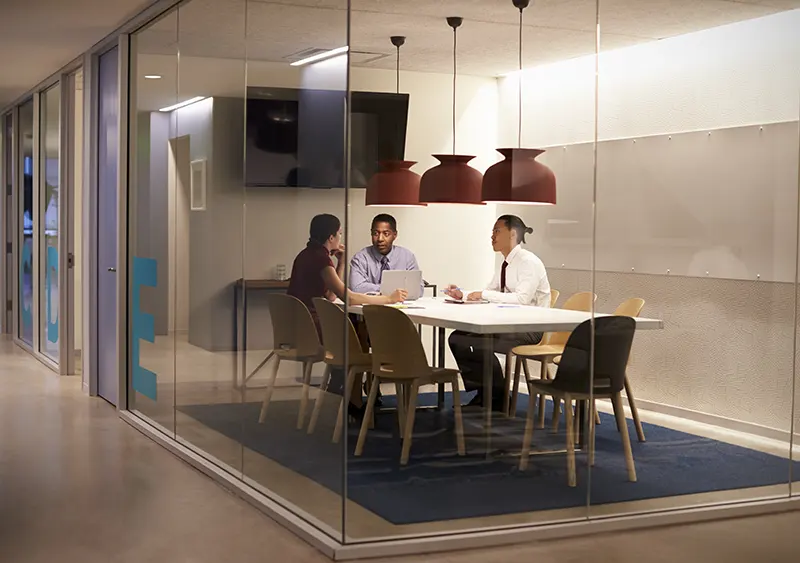Embracing Occupancy Analytics: A Q&A with James McHale
To help uncover insight into the market and the digital applications driving this change, we caught up with James McHale, Managing Director & Founder of Memoori, an analyst company based in Stockholm providing independent market research, business intelligence and advice on Smart Building technologies.
With Memoori being one of the key knowledge centres for the future of the market in which True Occupancy operates, we were keen to understand James’ perspective on the challenges and benefits associated with real estate innovation. Here’s a summary of the discussion we had.
How should building owners, managers and tenants approach new investments in smart building technology?
Generally speaking, the building industry doesn’t embrace change and innovative new technologies as quickly as other industries. And the specific value of such investments to a building owner, operator or tenant can be very different.
One of the key issues with new developments in the commercial buildings space is the way the industry is structured. This is something we have looked at in our latest report “Future Proof Smart Commercial Buildings.” What we found is that technology can often get engineered out during the design and build phase.
The construction industry, in general, is extremely risk-averse and generally leans towards the low cost, low-risk options. New technology has been deemed a risk and the adversarial contractual process, whilst being good at mitigating risk, is not so good at encouraging new technology solutions. While we are seeing clear growth in smart building technologies, coupled with rising customer expectations, this factor is still an obstacle to the technology becoming mainstream.
That said, we are seeing more and more companies start to carry out small test cases in existing buildings. Here they may install the technology, such as occupancy analytics sensors, in either one floor or one area of a building. This helps derisk a bigger investment and enables them to demonstrate the value in a relatively quick and cost-effective way.
Where should companies start when it comes to smart building technology?
I know this sounds ridiculously simple, but it’s really about setting some clear goals. I find it amazing how often this is overlooked. You have to articulate what is really important to the organisation, and then establish KPIs around those aims.
From that point, you need to work out how you will get the data to measure the progress towards those goals and KPIs. And if you don’t have those data sources available, you need to invest in the right tools and methods to get that data, as well as how you can analyse it effectively.
You have to focus on outcomes when it comes to looking at smart building technology investments. And that depends on the type of organisation and the type of building. The function and outcome of a warehouse is very different from an office, or from a prison, which might want to focus on reducing reoffending rates, or a hospital that wants to improve patient outcomes.
What’s the importance and role of occupancy analytics?
In terms of occupancy analytics, knowing where people and assets are in the building is obviously very useful data, and when you combine it with other data sources, it becomes even more useful. And more importantly, actionable. To me, that is the Internet of Things.
Space optimisation is an obvious use case with a demonstrable return on investment. If you can work out that 40% of the desks are never, or rarely, used there is a clear and obvious saving to be had. Then you can make some clear decisions on how the space could be better utilised, for example, whether to sublet it or get rid of it altogether.
Trying to get rid of wasted space is a clear reason to use occupancy analytics technology. However, we are not seeing many companies taking it to the next stage and integrating it with other systems yet.
For example, using occupancy data to determine levels of heating, cooling and ventilation by working out which rooms need to be heated, how resources should be allocated, which meeting rooms are being used, and whether the lights need to be on in those rooms. This is all about being more efficient with your energy usage.
You can’t manage what you can’t measure. Anyone can make an assumption about what they think is happening, but you don’t really know unless you accurately measure it and analyse the data.
How about the wider benefits beyond space and energy cost reduction?
We all know the nature of work is changing. What the younger generation want from a workplace is very different from what people were talking about ten or fifteen years ago. And the keyword here is flexibility.
There is no point in trying to predict the future accurately, but if you can build flexibility into the design of your workplaces, that will certainly help to mitigate some risks.
Workplace experience affects employee attraction, retention and collaboration and there are studies that go a long way to proving that. But the ability to approach building technology with flexibility and change in mind really depends on who you are as an organisation.
The likes of Google and Microsoft have a lot of cash to design and build new buildings, and really think about and understand what experience they want to create for their employees. In our knowledge-based economy, their ongoing competitive advantage is totally dependant on employing the best people... So it’s organisations like these who are really moving things on, although they are currently in the minority.
If you’re a low margin business, you’ve got to stay focused on your core business activity to keep your head above water and that’s where this whole message gets lost. Or the whole point of doing it in the first place can be forgotten.
Smart building technologies, especially occupant-centric applications, provide benefits that do outweigh cost savings due to space and energy usage reduction. However, such benefits are not always tangible. If the industry focuses on improving the end-user experience and clearly demonstrates the Return on Investment, it could trigger a wave of adoption across the commercial building industry.
As we advise in one of our recent reports Demonstrating Smart Building Business Value Further Up The Chain - we must be able to persuade the market in the language of business.
A final word from us…
While still in its relative infancy, smart building technology is showing rapid growth.
There’s little doubt occupancy analytics will prove a pivotal fixture in the future of ‘connected’ real estate and the workplace at large. Companies embracing change, and leading innovation in this space, will see rewards beyond the obvious and immediate cost reduction benefits as they adapt building design to empower the heartbeat of the business, its people.
Ready to get started with occupancy data analytics?
True Occupancy ‘Quick Start Kits’ are the perfect opportunity for you to test how our technology works, assess the data you get out of them and start to demonstrate ROI.
See occupancy through a different lens - click here to find out more.
Share this
You May Also Like
These Related Posts

Implementing Real-Time Analytics: A Q&A with Simon Carter

Using Occupancy Detection Sensor Data to Report ROI

Real-world Benefits of Occupancy Analytics
Connect with us
Need more information? Ready to get started? We're here to help, get in touch.


